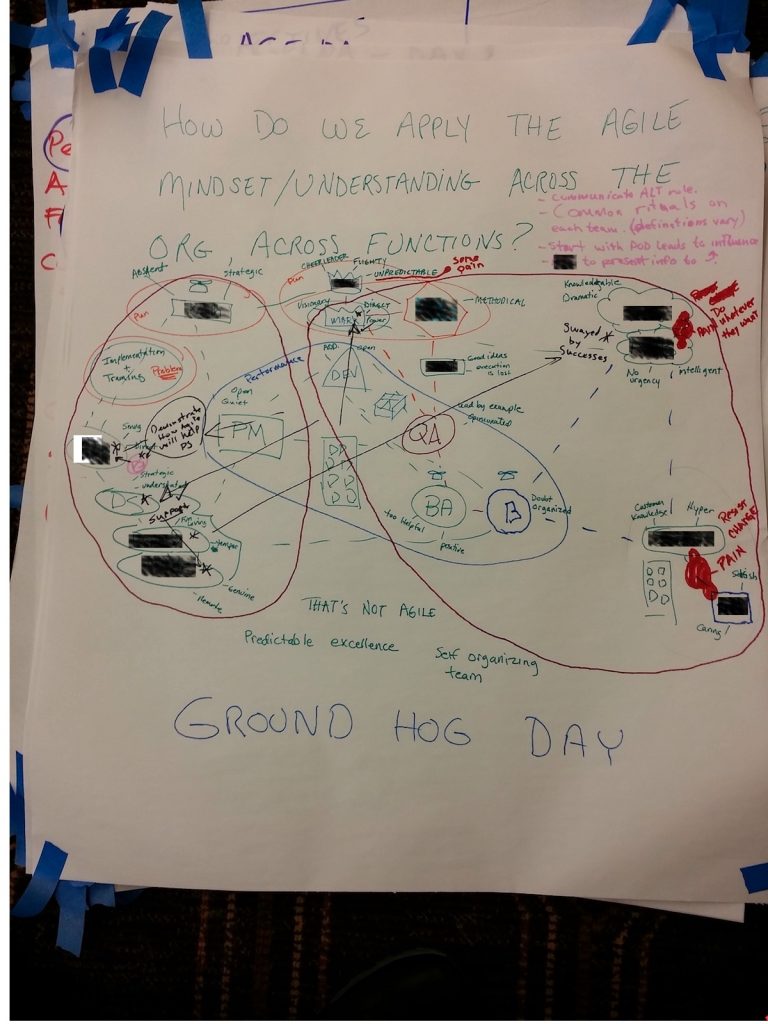Becoming an Agile Leader, Part 2: Who to Approach
To summarize: your agile transformation is stuck. You’ve thought about your why, as in Becoming an Agile Leader, Part 1: Define Your Why. You have some idea for measurements. Maybe you’ve even started to measure to capture the data.
Now, it’s time to talk to people across the organization. The question is this: Who do you talk with, to unwedge your agile transformation?
You know that the org chart is one way of seeing the system. And, there are many other ways to see your system. One way is an organizational map.
The organizational map helps you see who might have interests, pain, or power in different areas of the organization. You can then decide who and how to approach each of those people. Given their interests, you have some idea about how they might respond.
Every single time I’ve worked with people to create their organizational maps, they have learned something. Most often, they realize that someone else in a corner of the organization has key information for agile success. Sometimes, the transformation advocate realizes that another person has less or more power than we expect. Sometimes, the agile advocate realizes that if they supply some key measurements, they might be able to unlock the agile transformation.
Sometimes, people are surprised that developers or testers are the people with power and help. Sometimes, it’s people across the organization, such as someone in Finance or HR. Your transformation allies can be anywhere in your organization.
The organizational map helps you see who is helping your agile transformation, who is neutral, and who is not helping. This map, with names blacked out, is from participants at last year’s Influential Agile Leader.
In my experience, the people who are neutral or not yet helping are not “resisting change.” They are not skeptics, although they may act skeptical. Here’s what I have found most often: they haven’t discovered the usefulness of agile to achieving their goals.
If I understand the why for agile and understand their interests, power, and pain, I have an entry into asking them what their goals are, especially if the map didn’t make that obvious.
Nurturing and maintaining an agile transformation is hard work. I like knowing who I should talk to, to make sure I’m gaining the most benefit from all of my work. I can gain allies in my measurement-gathering and in the actions I want to take for the agile transformation. I might even consider a change for how to transform the organization.
If you want to learn how to create an organizational map, join us at the next Influential Agile Leader, May 9-10, 2017 in Toronto.
My next post is about how to approach these people, especially peers and people senior to you.
| Reference: | Becoming an Agile Leader, Part 2: Who to Approach from our JCG partner Johanna Rothman at the Managing Product Development blog. |




Agile SDLC model is a combination of iterative and incremental process models with focus on process adaptability and customer satisfaction by rapid delivery of working software product. Agile Methods break the product into small incremental builds. These builds are provided in iterations. thanks for sharing